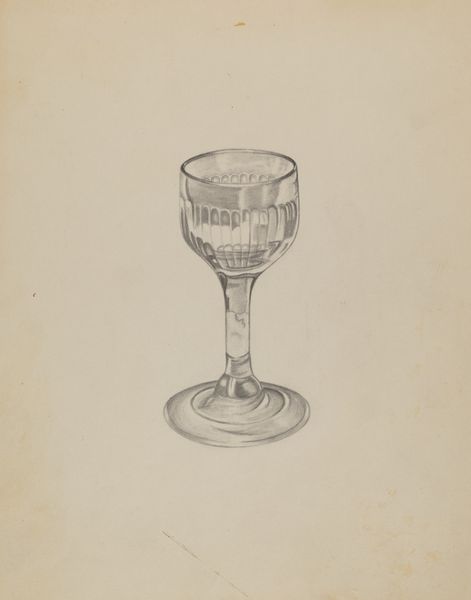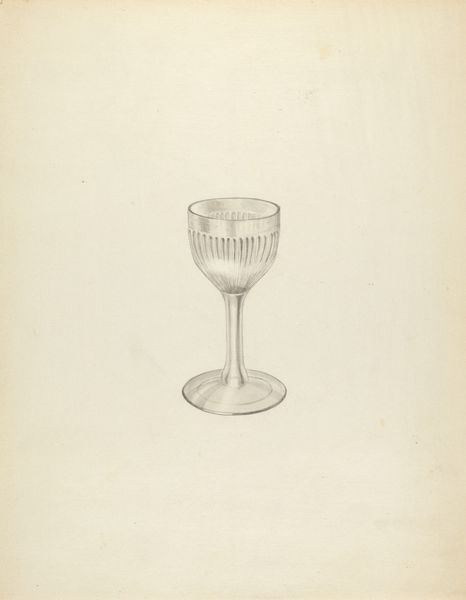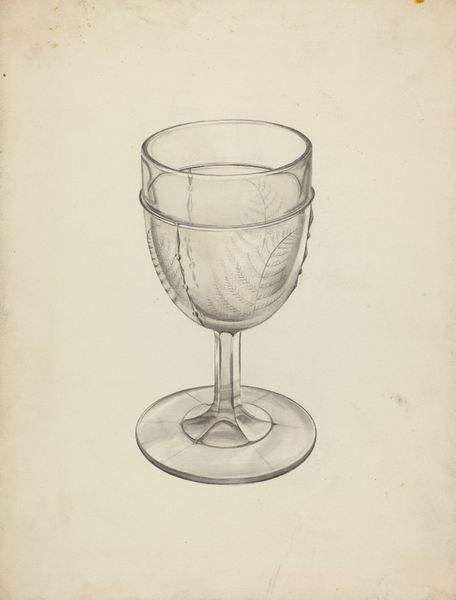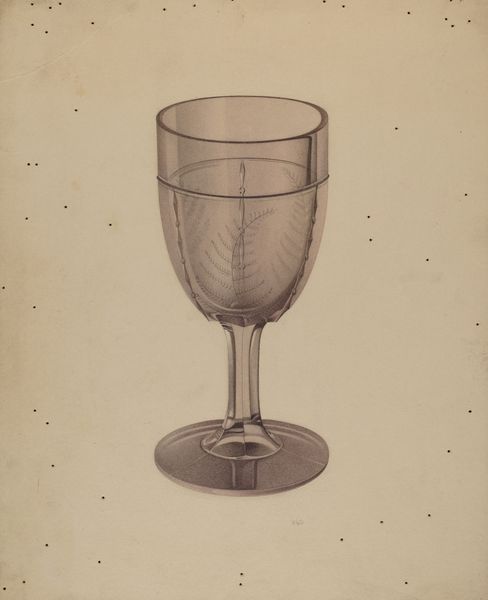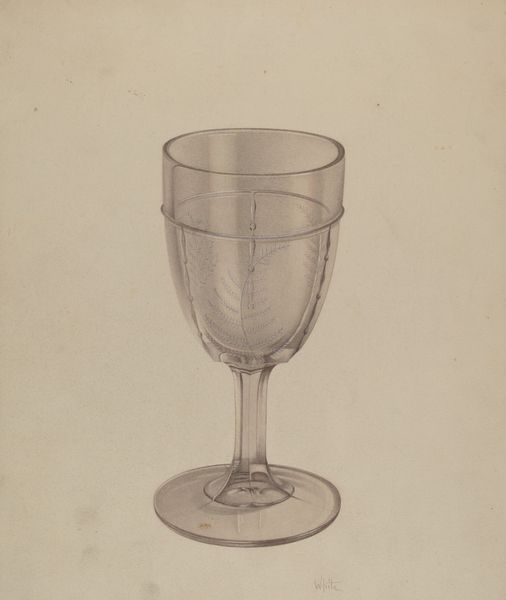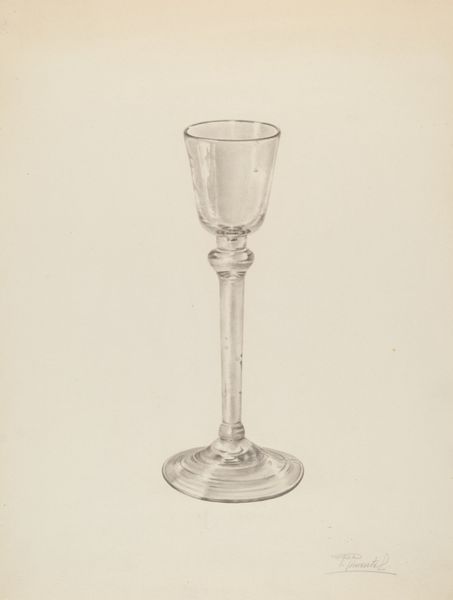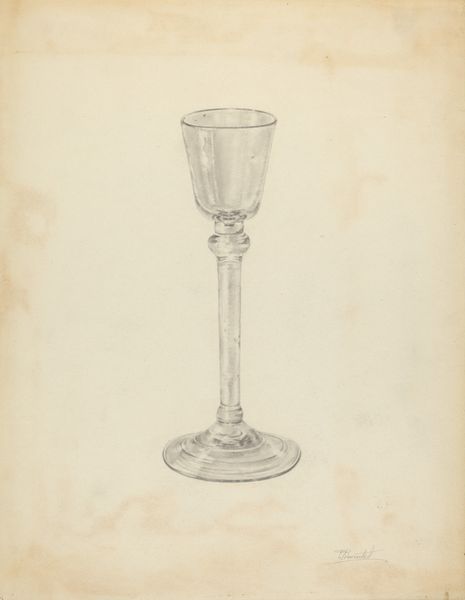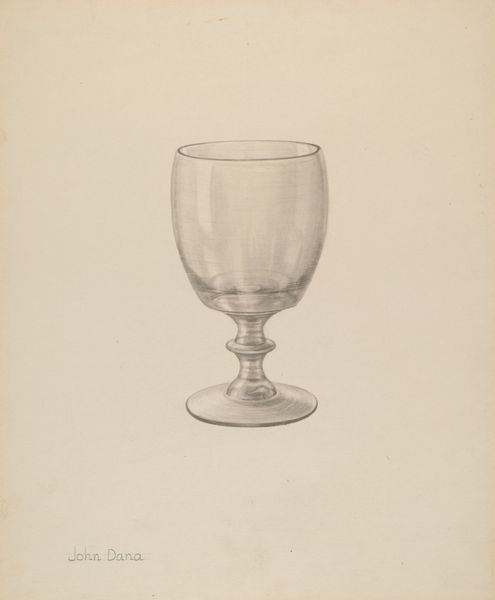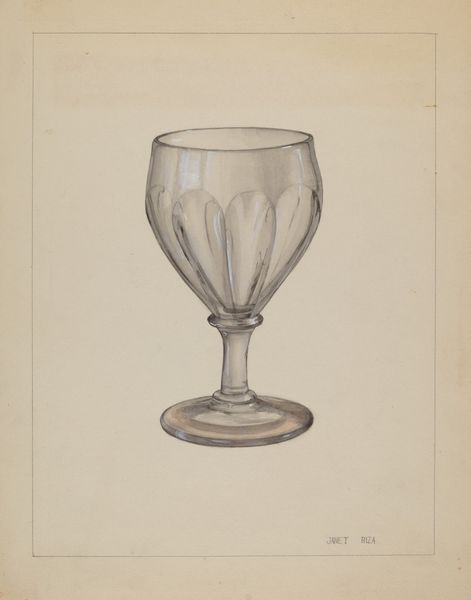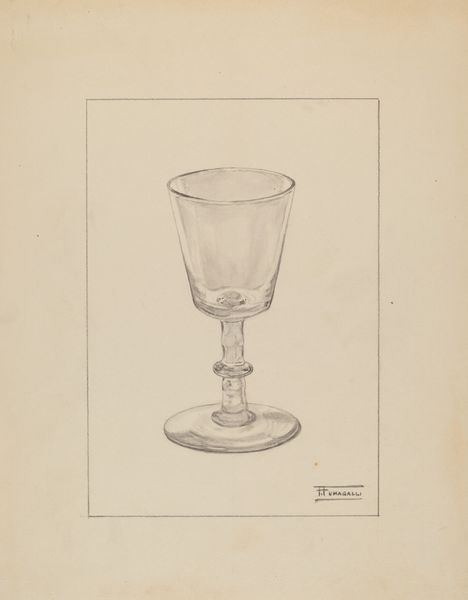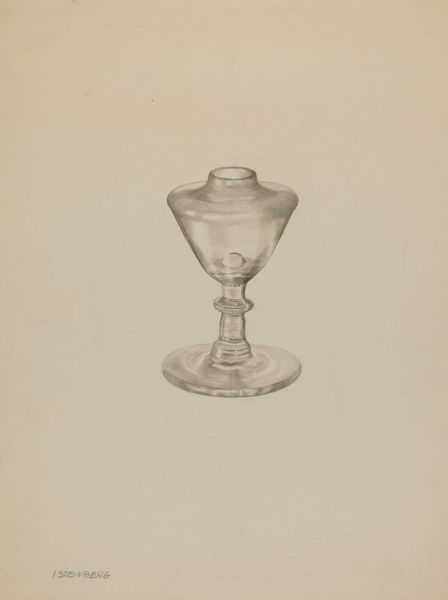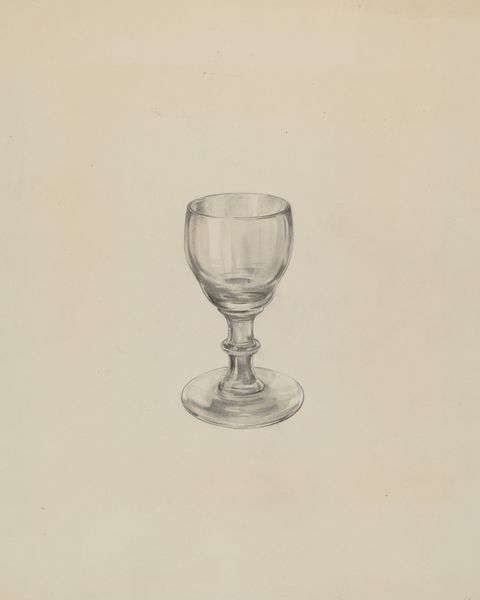
drawing, pencil
#
drawing
#
pencil
#
academic-art
#
realism
Dimensions: overall: 28.7 x 22.6 cm (11 5/16 x 8 7/8 in.) Original IAD Object: 6 5/8" high
Copyright: National Gallery of Art: CC0 1.0
Curator: Up next we have Michael Fenga's drawing of a "Wine Glass" from around 1940. What's your immediate impression? Editor: It feels subdued, almost reverent, doesn't it? The pencil work is so delicate, emphasizing the form and play of light across the glass more than the object itself. Curator: Indeed. Fenga's precision in capturing the geometric form of the glass, the ellipses of its rim and base, creates a compelling exercise in realism, further highlighting academic-art approaches. The subtle tonal variations suggest depth and volume while rendering transparency, engaging with complex techniques. Editor: I'm more interested in how this relates to everyday life. Wine glasses are products of skilled labor and manufacturing processes—consider the glass-blowing techniques required to achieve such refined contours and perfect proportions. How does mass production intersect with the art world here? What was Fenga interested in drawing this, from life, probably using as model a mass produced object? Curator: That's a fair point, though the focus here leans into aesthetic formalism. Fenga uses subtle gradations to highlight its texture while carefully articulating the different sections of the glass—the bowl, stem, and foot—showing mastery of pencil technique and understanding form. Editor: But can't we also see a subtle commentary here? In drawing something so functional, is Fenga elevating the ordinary to an art historical level? This isn’t some precious metal. Curator: That's one interpretation. You know, in some ways, its austere representation pulls out its symbolic charge. As if the function isn’t enough. This treatment removes it from the messiness of production, doesn’t it? Editor: Fair enough. What I’ll say is that, whether by design or not, Fenga inadvertently highlights the interplay between utility, labor, and artistic interpretation in this quiet still life. Curator: I concur. The drawing exemplifies how an ordinary object can offer avenues for studying the subtle yet powerful effects of visual analysis, technical virtuosity, and compositional clarity. Editor: Right, this focus on functional design—whether consciously or not—prompts reflections on design principles, craft traditions, and the values attached to different types of object. Curator: In essence, what looks like a mundane still life drawing invites diverse avenues for interpretations spanning across art history, material culture, and cultural studies. Editor: Exactly! Thank you for that journey, let's look at something else.
Comments
No comments
Be the first to comment and join the conversation on the ultimate creative platform.
